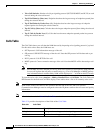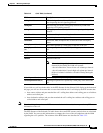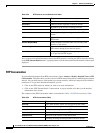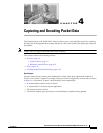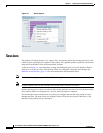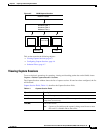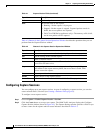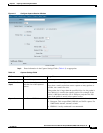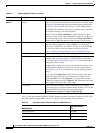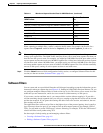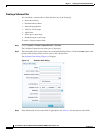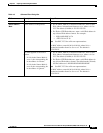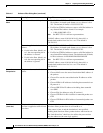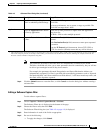
4-4
User Guide for the Cisco Network Analysis Module (NAM) Traffic Analyzer, 5.0
OL-22617-01
Chapter 4 Capturing and Decoding Packet Data
Sessions
Table 4-2, Buttons in the Capture Session Operations Window describes the operations that you can
perform from the Capture Sessions window.
Configuring Capture Sessions
You can configure up to ten capture sessions. As part of configuring a capture session, you can also
create software filters, if desired (see
Creating a Software Filter, page 4-8).
To configure a new capture session:
Step 1 Choose Capture > Packet/Capture Decode > Sessions.
Step 2 Click the Create button to set up a new capture. The NAM Traffic Analyzer displays the Configure
Capture Session window (shown in
Figure 4-3). The Capture Settings window provides a field for you
to enter a name for the capture and four status indicators described in Table 4-3.
Packets
Number of packets
State
The current status of the capture:
• Running—Packet capture is in progress
• Stopped—Packet capture is stopped. Captured packets remain in
buffer, but no new packets are captured
• Full (Cisco 2200 Series appliances only)—The memory or file is full,
and no new packets will be captured.
Table 4-1 Capture Session Fields (continued)
Operation Description
Ta ble 4-2 Buttons in the Capture Session Operations Window
Operation Description
Create
Create a new capture session. See Configuring Capture Sessions, page 4-4.
Edit
Edit the settings of the selected capture.
Delete
Delete a selected session.
Start
Start capturing to a selected session. The number in the Packets column for
that session will start to rise.
Stop
Stop capturing to the selected session (no packets will go through). Capture
data remains in the capture memory buffer, but no new data is stored. Click
Start to resume the capture.
Clear
Clear captured data from memory.
Decode
Display details of the capture session.
Save to File
Save a session to a file on the NAM hard disk. See Files, page 4-15.



